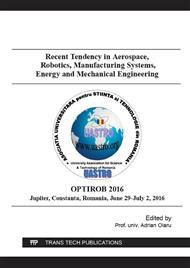p.83
p.91
p.97
p.105
p.110
p.116
p.122
p.133
p.139
Hybrid Solar and Wind Electric System for Romanian Nearly Zero Energy Buildings (nZEB) - Case Study
Abstract:
For a good approach to new challenges recommended by EU Energy Performance of Buildings Directive, nearly Zero Energy Buildings (nZEB) concept for new residential buildings is conceived in order to drastically improving the overall performance of classical buildings, especially in terms of energy use, production and CO2 equivalent (CO2e) emissions. This paper shows the results of the case study where was investigated energy, economic and environmental performances of hybrid solar and wind system for neutral in terms of climate parameters nZEB. The aim of this study was to demonstrate the capability and feasibility of RES hybrid technology for the energy supply of Romanian nZEB, and also, was to establish new general criteria with the goal to determinate the optimal design solution and providing general principles for green energy production. The main results reveal that Romania has a potential for green energy to implement the new concept nZEB and the global technical optimum of a hybrid system for nZEB is determined by the optimal interaction between the design parameters. The hybrid solar and wind electric systems are functioned in operational stand alone mode, its are supplied 100% by energy from RES and embedded CO2 emissions are decreased by over 50% compared to the classics systems.
Info:
Periodical:
Pages:
110-115
Citation:
Online since:
June 2016
Keywords:
Price:
Сopyright:
© 2016 Trans Tech Publications Ltd. All Rights Reserved
Share:
Citation:


